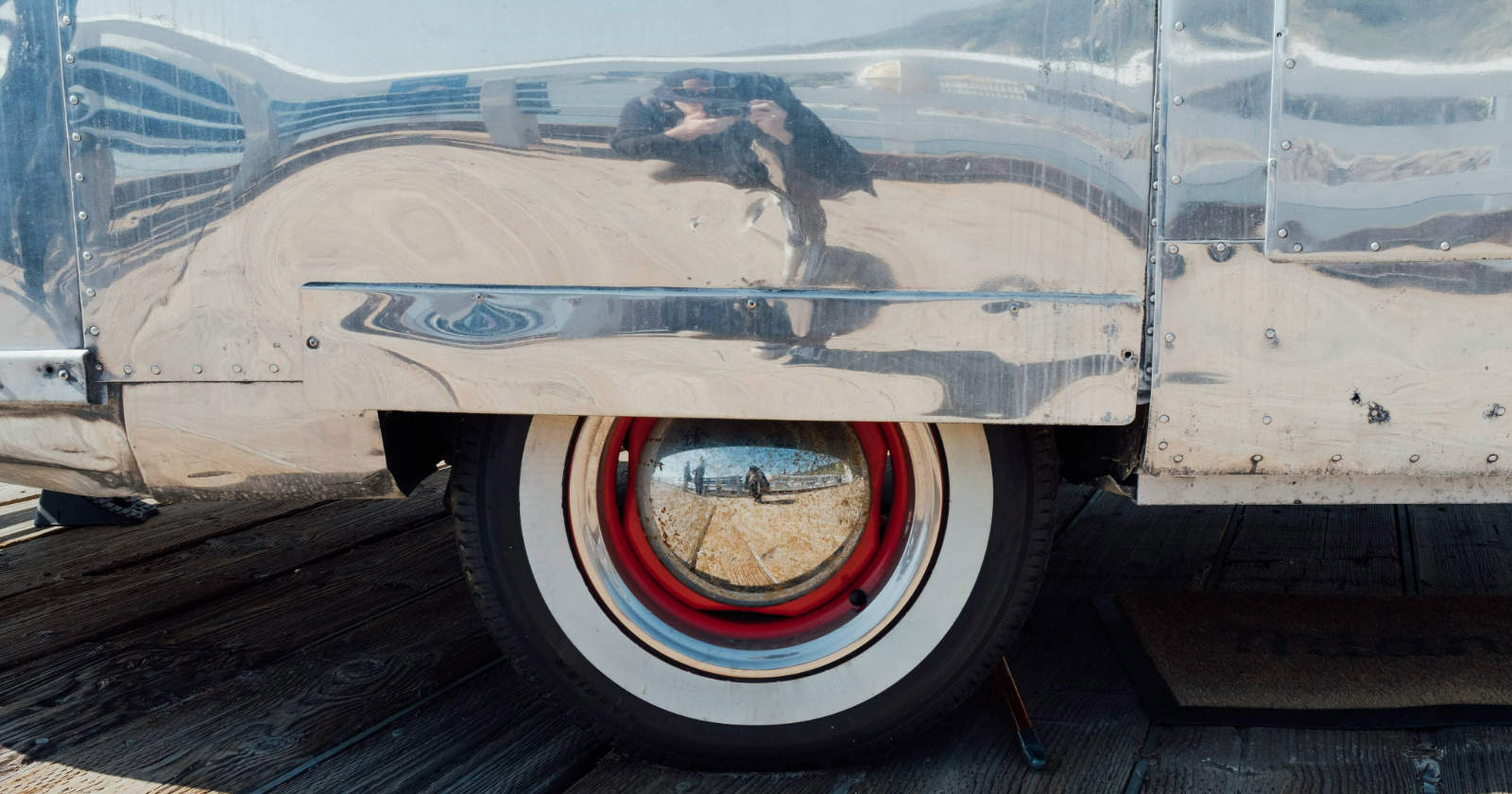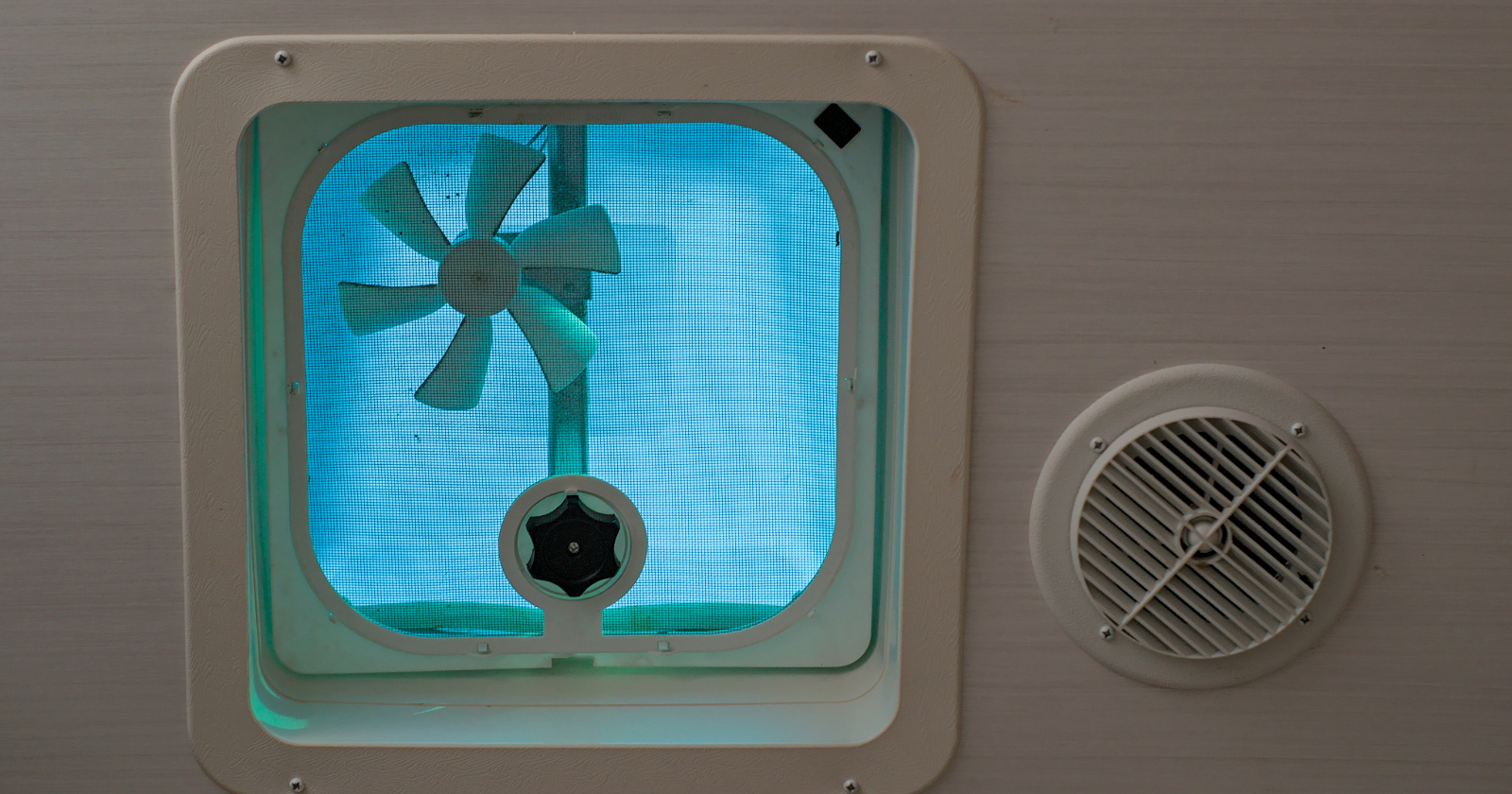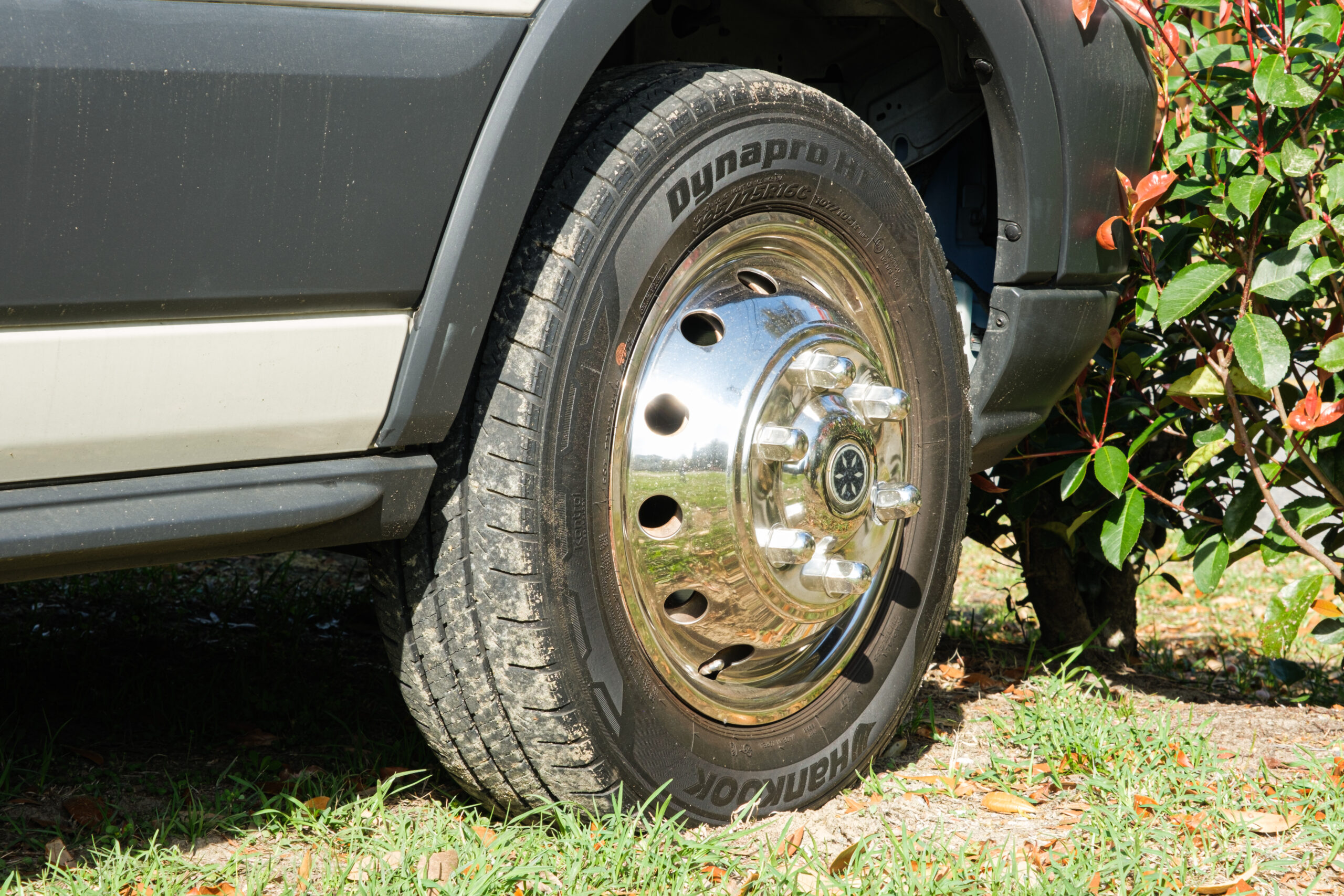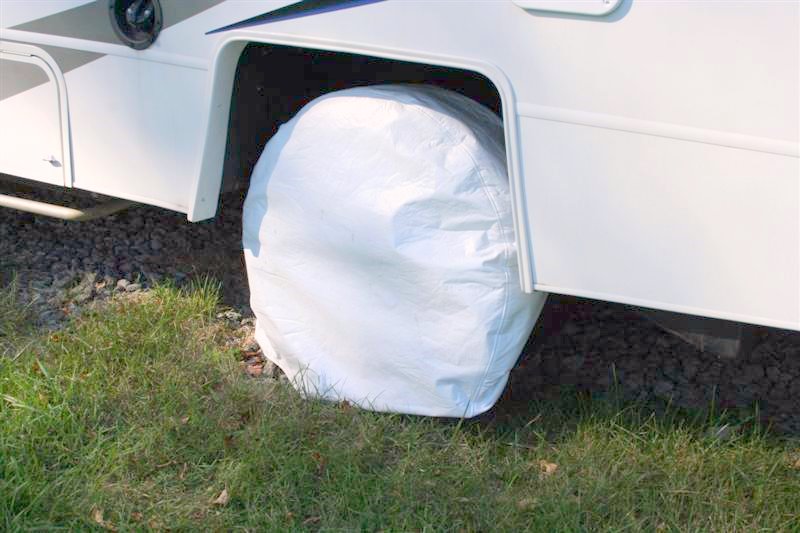
RV Tire Storage: How To Really Protect Your Tires
Most RV owners have heard that it is a good idea to protect their tires from UV damage when parked. As we approach the time when many owners will be parking and winterizing their RV, practicing proper RV tire storage is critical.
While exposure to direct sunlight can result in cosmetic surface cracking from UV rays, the hidden damage from the heat of the sun can occur any time you park your RV outdoors. While some folks swear by and like to spray chemicals on the sidewall of their tires, none of those sprays offer protection to the heat damage from direct exposure to the sun.
What are the benefits of RV tire covers?
In my experience, RV tire covers or other forms of tire shields not only protect from UV but more importantly, protect from internal damage caused by the sun’s heat.
I have seen some interesting posts and comments about tire covers over the years. One post in particular caught my eye. The owner was complaining about the cover degrading in the sun so he was of the opinion the cover wasn’t worth the cost. I have to wonder how he failed to properly interpret the proof that the cover was protecting his tires.
How would he have answered my question: Which would you rather have degraded due to being in the sun, your expensive tires or the low-cost cover? This essentially proves the point that proper RV tire storage is key. As an engineer, I always prefer to have hard data rather than just someone’s opinion, so I set up a quick test on my own RV.
I have confirmed, with temperature measurements, the significant temperature drop with the use of white vinyl covers on Class B, Class C, and RV trailer sizes, and the use of flat mesh tire shades on Class A motorhomes. I would recommend against the use of black or dark color solid vinyl covers as they would act more like an oven by both transferring the sun’s heat to the tire and preventing cooling air circulation around the tire.
Roger Marble – RVTireSafey.net
RV tire storage temperature test
With one side of the RV in full shade, I checked the temperature of the side of the RV itself using a digital infrared laser thermometer you can buy almost anywhere.
I measured the side of my RV in full shade at 85.1°F. Next, I measured the side of my RV (again, the RV, not the tires) in full sun. This came in at 107.9°F. This gives you a sense of the heat and power of the sun.
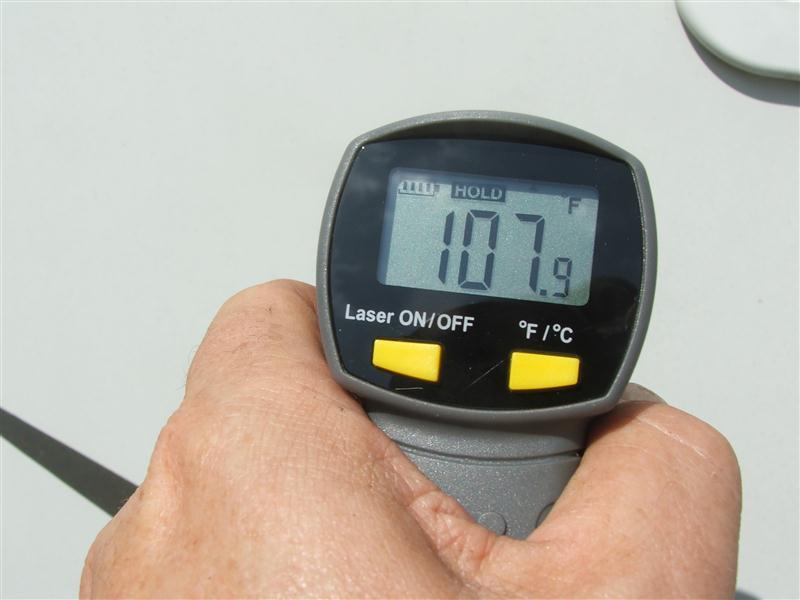
Next, we measured the RV tire cover itself in full sun. It was a bit more forgiving, it came in at 98.6°F. Remember, different materials yield different IR readings. I then removed the tire cover to get a temperature reading on the tire itself, which came in at 99.5°F, so about 1 degree hotter than the cover.
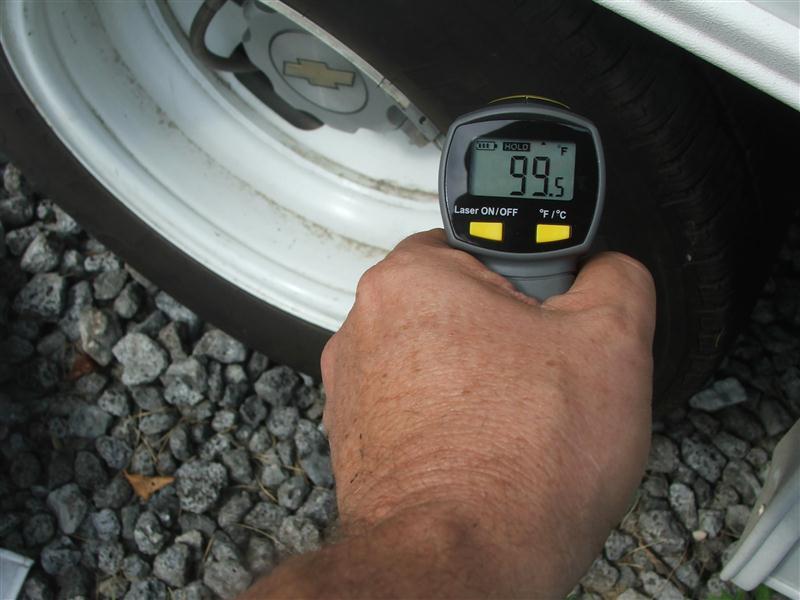
After removing the RV tire cover from the tire, I exposed the tire to the direct sunlight and full UV power of our sun for just 30 minutes. I then re-measured the tire temperature and received a reading of 136.1°F. An increase of 36°F. Wow.
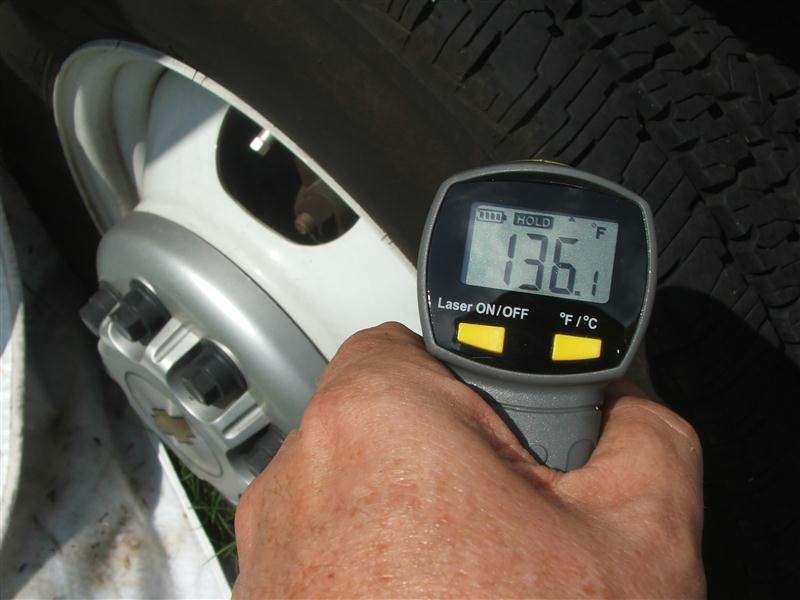
Some key points about RV tire storage
Three things that can hurt your tires are ozone, UV, and high temperature. The ozone & UV rays directly attack the surface of the tire, causing it to crack when flexed. Temperature works not only on the surface but deep down inside the tire structure.
Increased temperature causes a continued and accelerated chemical reaction which ages a tire faster than when the tire is cool. A good rule of thumb would be that the rate a tire ages doubles with every increase of 18°F in temperature. We can see the result of old rubber on the surface. What we don’t see is the more brittle rubber of the internal tire structure. As rubber gets more brittle with age, it also loses strength.
Note that overloading the tire(s) and underinflation can overheat a portion of a tire to the point the rubber and reinforcement materials lose all their strength.
Keep your RV tires protected
Based on my simple test, it would appear that by covering my tires I am significantly reducing the accelerated aging for all the daylight hours my RV is parked and the sun is out. If I didn’t have covers, my tires would be “aging” FOUR times faster than with the covers in place.
In my test, I used white vinyl covers. I have measured the temperature of some tires on Class A motorhomes and found that the flat sheet mesh covers do a good job of protecting those tires because the small openings of the mesh allow air to circulate but until almost sundown, the sunlight is at the wrong angle to get through the mesh. For these large tires, the mesh seems to be lighter and easier to handle than a vinyl cover.
Been to a campground lately? Don’t forget to leave a review! Reviews help other RVers like yourself, and they help the campground. Leave a campground review today!

